Robinson Crusoe On Mars: Classic Martian Movie Memorabilia
By William J. Felchner - November 05, 2021
The 1950s and 60s produced a plethora of outstanding science fiction movies. One of the best was a relatively forgotten film titled Robinson Crusoe on Mars, released in 1964. A minor cult classic with Baby Boomers and the dedicated sci-fi crowd, Robinson Crusoe on Mars generated a wealth of memorabilia for todays collectors. Produced by Aubrey Schenck for Paramount Pictures, Robinson Crusoe on Mars was directed by Byron Haskin with a screenplay by Ib Melchior and John C. Higgins. Winton C. Hoch served as cinematographer, with Nathan Van Cleave providing the music. The cast was sparse, starring Paul Mantee as Commander Christopher Kit Draper, USN, Vic Lundin as Friday, Adam West as Colonel Dan McReady, USAF, and Barney the Woolly Monkey as Mona. Inspired by the 1719 novel Robinson Crusoe by Daniel Defoe, Robinson Crusoe on Mars was budgeted at $1.5-$2 million and shot on location in Californias rugged Death Valley. Death Valley proved to be the ideal locale, where the desolate desert landscape doubled as the savage Red Planet. Filming commenced on Dec. 2, 1963, in the California-Nevada border region, with most of the movie shot at Zabriske Point in Californias Death Valley National Park. The films stunning special effects were expertly rendered by Lawrence Butler and Oscar-winning matte artist Albert Whitlock. Designer Albert Nozaki created the three alien spacecraft miniatures prowling the Martian atmosphere. They might look familiar to sci-fi movie fans, as they resemble the deadly Martian war machines used to such chilling effect in the 1953 classic The War of the Worlds, which had also been directed by Byron Haskin. The movie begins with American astronauts McReady and Draper (and Mona, of course) orbiting the Red Planet aboard Mars Gravity Probe 1. Following a near-collision with a large meteoroid and now running low on fuel, the space explorers are forced to abandon ship and descend in their single lifeboat pods. Only Commander Draper and Mona survive the landing, however, as McReadys lifeless body is later found in the wreckage. Mars proves to be a hostile environment, with Draper and Mona barely surviving the planets thin atmosphere with the assistance of their supplemental oxygen tanks. When the tanks are finally depleted, things look bleak, until Draper accidentally discovers coal-like rocks which release oxygen when heated. Draper later solves their food and water problem as well when the ever-curious Mona discovers an underground cave filled with fresh water and edible, sausage-like plants. Mars isolation sorely tests Drapers sanity over the ensuing months. In one hallucination Draper imagines that his partner McReady is still alive, begging his dead friend to speak. Draper eventually encounters a fleeing slave who is being pursued by his alien captors via the electronic bracelets attached to the mans wrists. Draper names his new acquaintance Friday, teaching him English. Friday in turn shares his oxygen pills with the American astronaut, forging a bond of mutual trust. Draper, Friday and Mona attempt to evade the alien spacecraft as they make their way north through the Red Planets underground canals. At the polar icecap, Draper is finally successful in sawing off Fridays electronic tracking bracelets, but the trio are still in danger of freezing to death until Drapers portable radio detects an English-speaking voice orbiting in a spaceship overhead. Robinson Crusoe on Mars received a number of positive reviews upon its release in June of 1964, though that hardly translated to equal success at the box office. Eugene Archer, film critic for The New York Times (8/27/64), reported, This clever yarn follows the famous Daniel Defoe story with old-fashioned fidelity, down to the introduction of Friday and time out for the lonely heros neurotic dreams. Merely placing it in space gives it a fresh and unexpected quality, particularly when the planetary elements are handled with the inventiveness displayed here. Credit Byron Haskin, the experienced director, with the enjoyable result. Robinson Crusoe on Mars generated a small galaxy of memorabilia for todays collectors. Leading the way is the films standard one-sheet poster (27-by-41 inches), which features the blurb, A lone U.S, astronaut pitted against all the odds beyond this earth! One example in folded, very fine condition sold for $216. These are all auction prices courtesy Heritage Auctions. Always one of my favorites, the eight-card lobby set, which was originally displayed in theater lobbies to promote the picture, is another fine piece of memorabilia. The set features colorful, fantastic scenes from the film, most of which picture star Paul Mantee in his titanic struggle to survive the Red Planet. One set in fine/very fine condition went for $204. The movies half-sheet poster (22-by-28 inches) is another collector favorite. One example in folded fine/very fine condition realized $155.35. Foreign movie posters are a real treasure for collectors. The Australian Daybill poster (12.5-by-29 inches) is always in demand. One example from Down Under in folded fine+ condition went for $143.40. The Belgian poster (14-by-21 inches) is another fine foreign entry. One example in very fine+ condition sold for $119.50. One of the most interesting items in the Robinson Crusoe Martian sweepstakes is the films pressbook and merchandising manual. These manuals, which contain the movies entire promotional campaign in the form of press releases, sample posters, stills, etc., were issued by Paramount Pictures to theater owners. One example in uncut folded very fine+ condition brought a reasonable $31. Oddball items were also produced for the picture. A lot of 22 black-and-white matte finish proof photos in very fine condition brought $109. The movie also generated its own theme sheet music, Robinson Crusoe on Mars with lyrics by Earl Shuman and music by Leon Carr. One example, autographed by both Paul Mantee (1931-2013) and Vic Lundin (1929-2013), sold for $50. In 2017, the Robinson Crusoe on Mars production archive assembled by screenwriter Ib Melchior (1917-2015) was offered for sale. A real treasure trove, the archive contained handwritten notes, a story outline, script pages with illustrations, magazine articles and news clippings, a signed Laser disc from stars Paul Mantee and Vic Lundin, and a vintage radio spot on a 10-inch LP record, among other items. The group realized $1,536. Images courtesy of Heritage Auctions, Dallas, Texas. William J. Felchner is a graduate of Illinois State University. His work has appeared in a number of periodicals, including Hot Rod, True West, Corvette Quarterly, Sports Collectors Digest, Old West, Movie Collectors World and Pennsylvania Magazine.

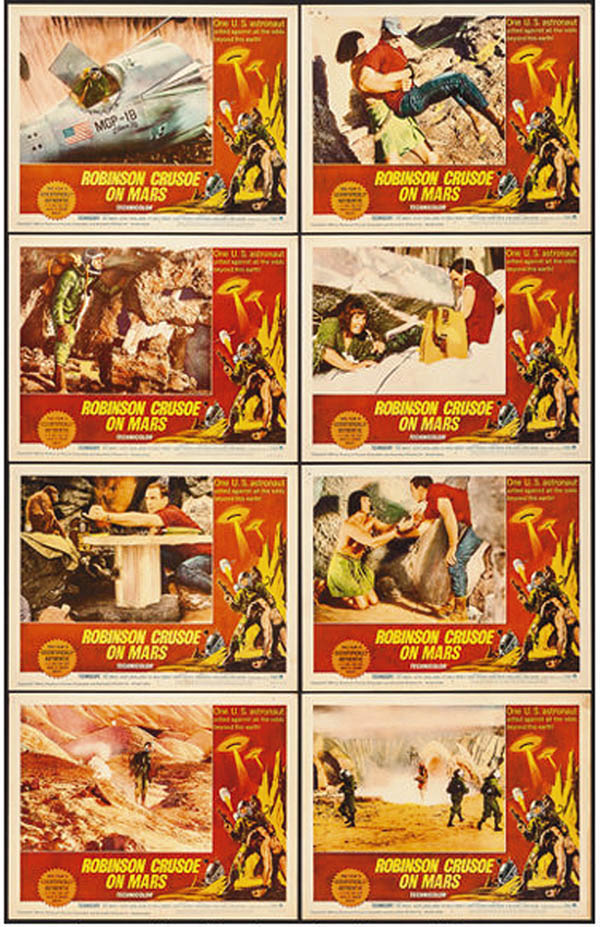

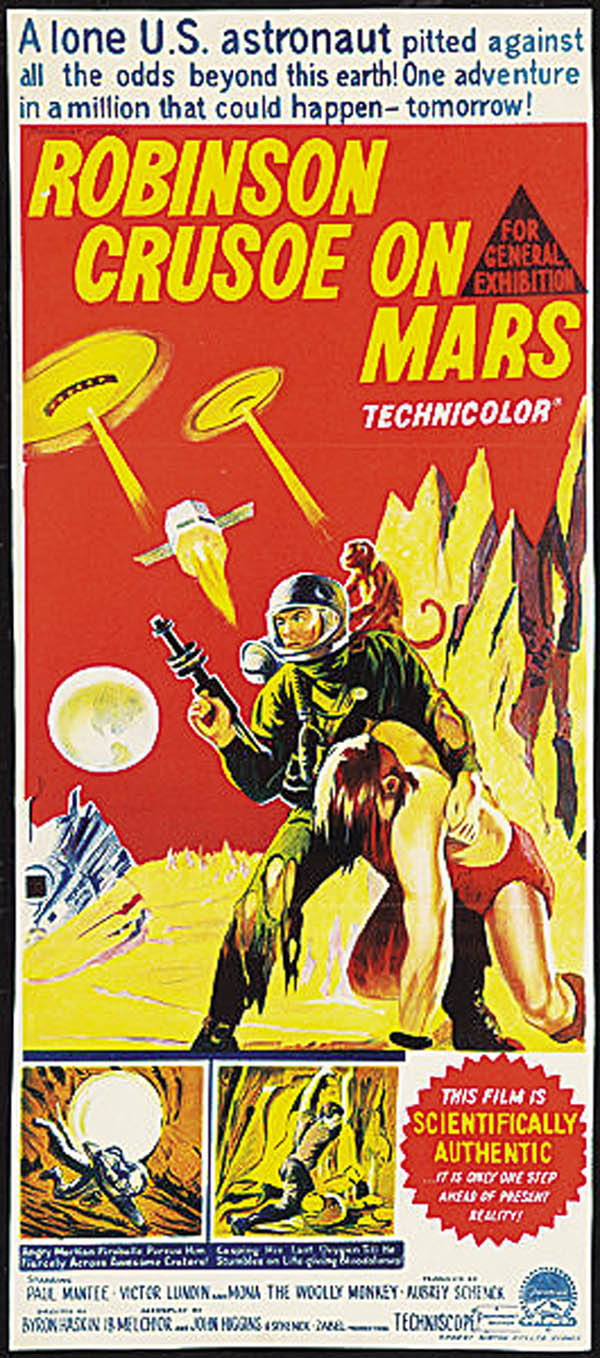

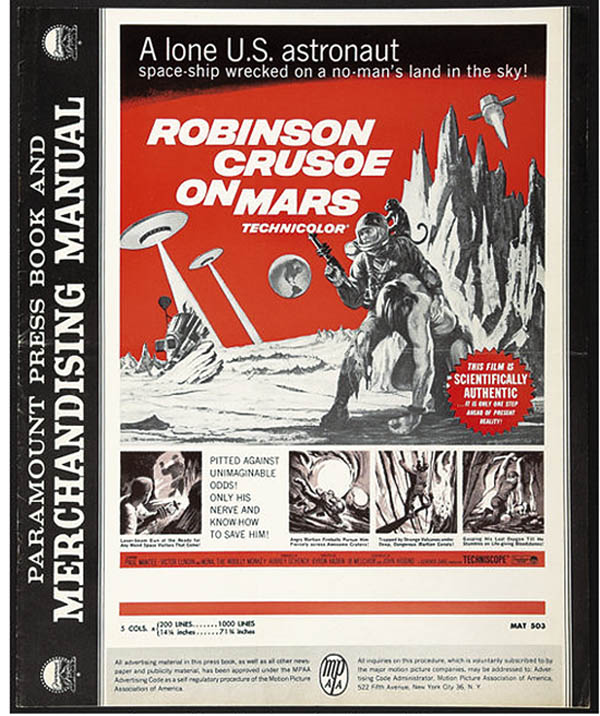

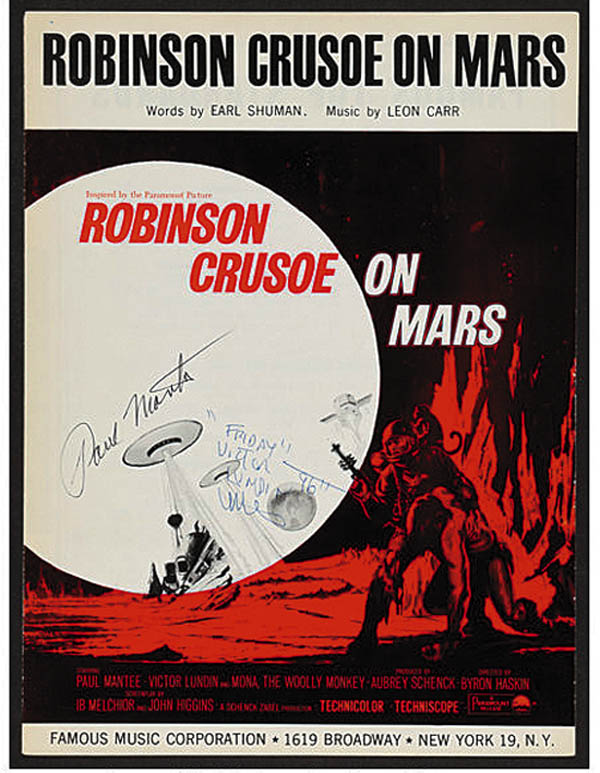
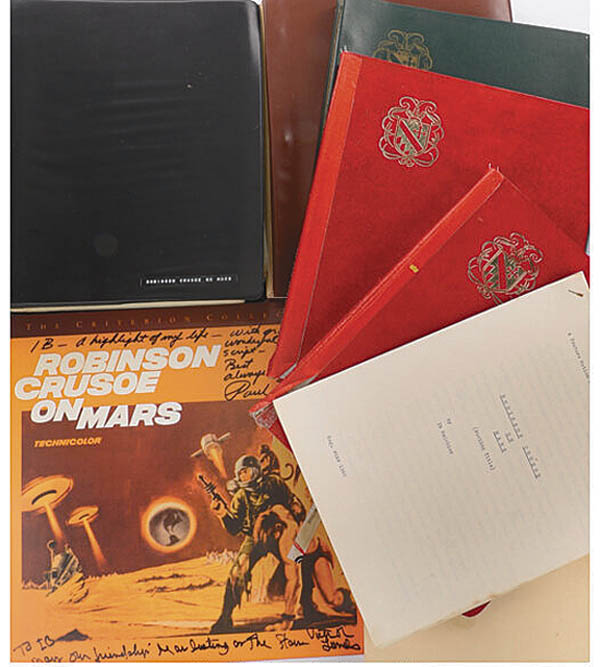
SHARE
PRINT